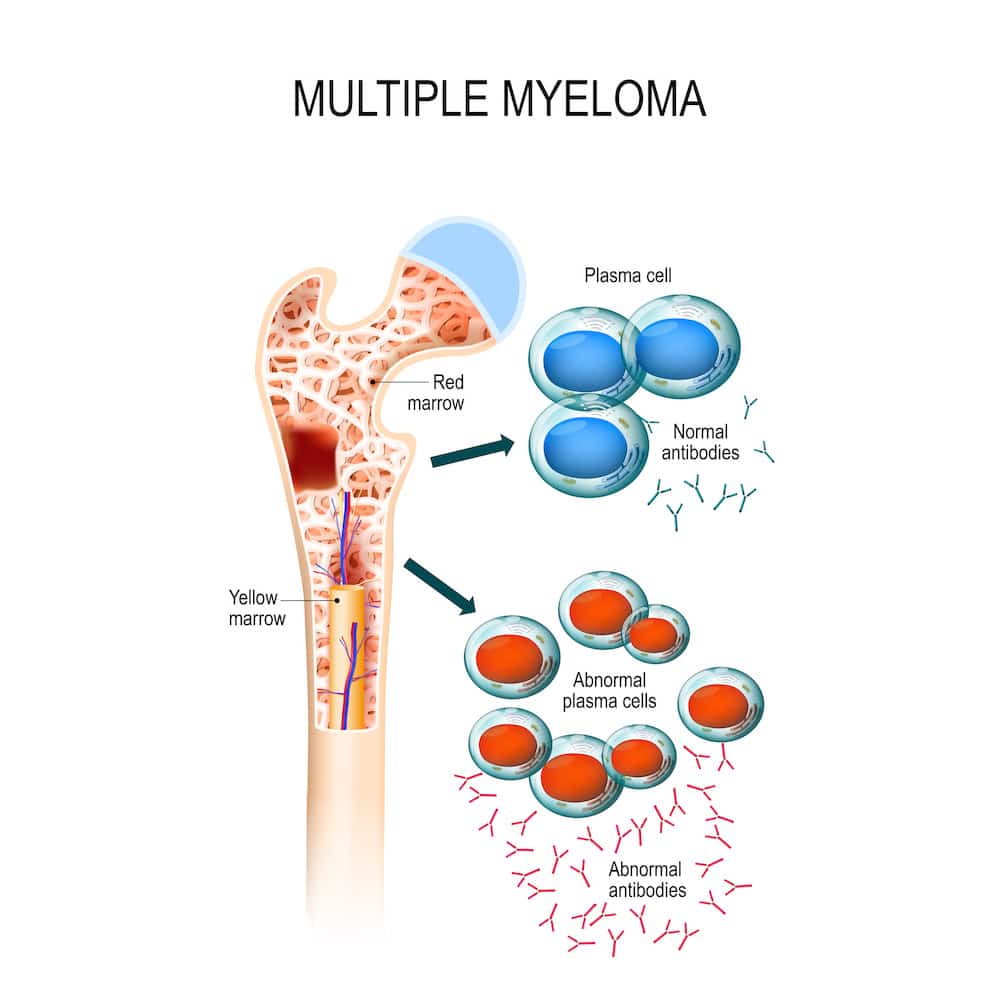Stages and types of multiple myeloma

As noted above, patients typically undergo different stages before turning into multiple myeloma. The natural history of the disease usually goes like this:
- Monoclonal gammopathy of undetermined significance: It is the most common starting condition that leads to multiple myeloma. In this ailment, there’s a protein in the blood called M protein, which is synthesized in the bone marrow. In this ailment, there’s a base genetic alteration that overlaps with others and ultimately leads to multiple myeloma.
- Smoldering multiple myeloma: It is the precursor stage of multiple myeloma when plasma cells are already affected by several genetic alterations. In this stage, patients start displaying spinal lesions and may also have ongoing tumors found in an MRI scan, but patients are usually asymptomatic.
- Asymptomatic multiple myeloma: This is also known as stage 1 multiple myeloma. In this phase, there are not many cancerous cells, and patients remain asymptomatic. In some cases, they would have anemia and some weakness and may sometimes display bone damage and other lesions.
- Symptomatic multiple myeloma: Multiple myeloma usually start displaying symptoms in the second stage of the disease. In this phase, anemia is worse and usually causes severe weakness. Calcium levels in the blood are typically raised, causing some of the symptoms listed above.
- Comorbidities and complications: In stage 3, multiple myeloma causes severe anemia, a considerable loss of proteins eliminated in the urine, severe bone damage in at least three areas of the body, and rising calcium levels in the blood.
